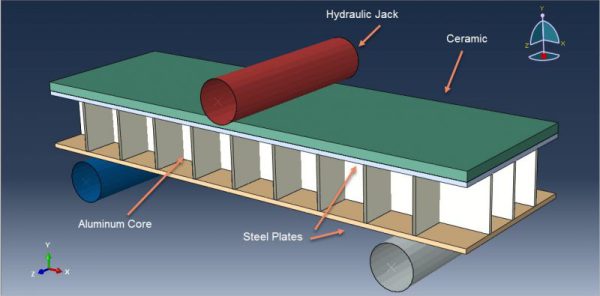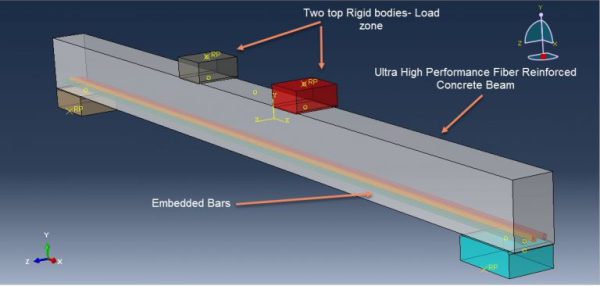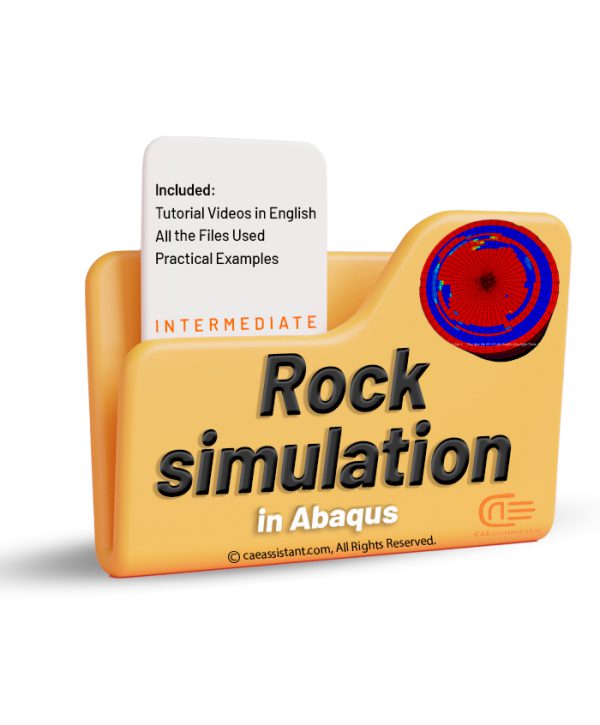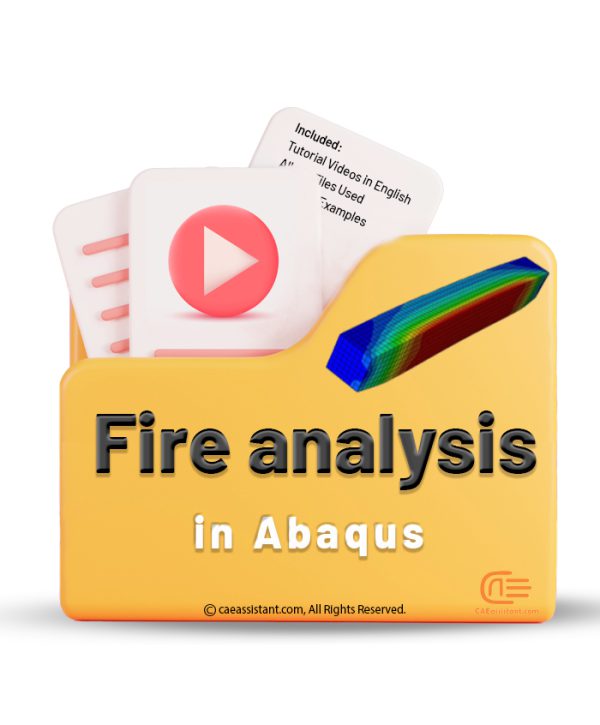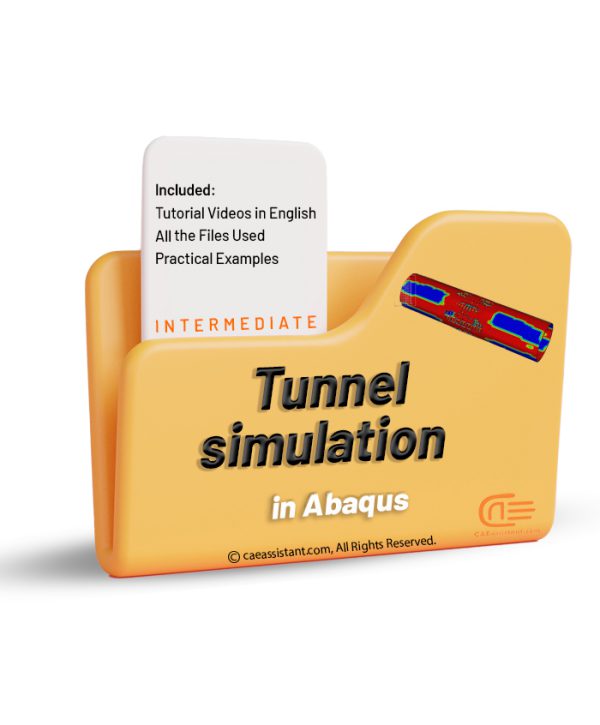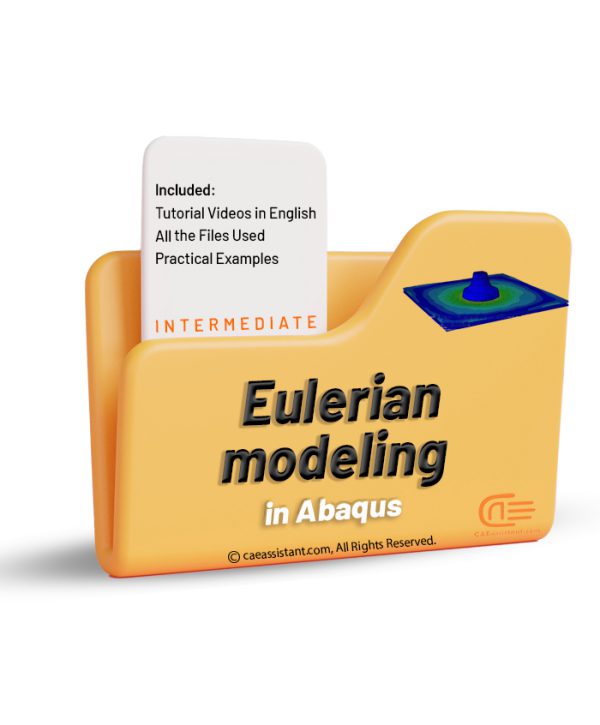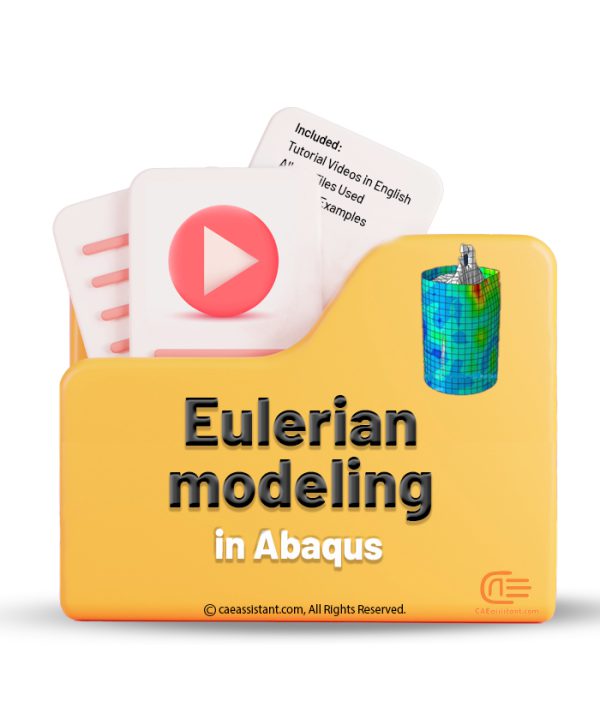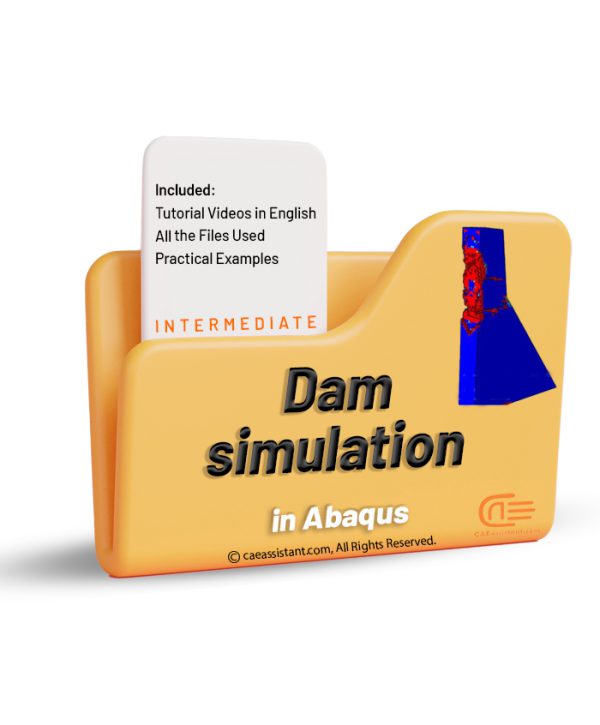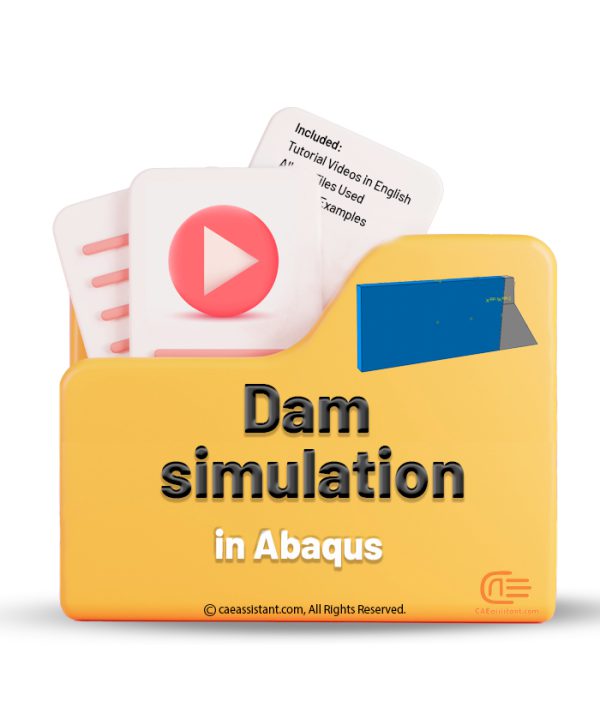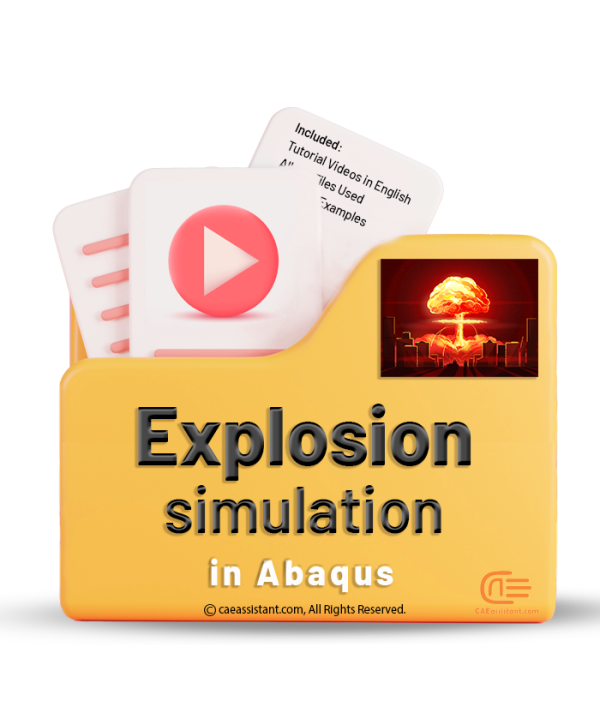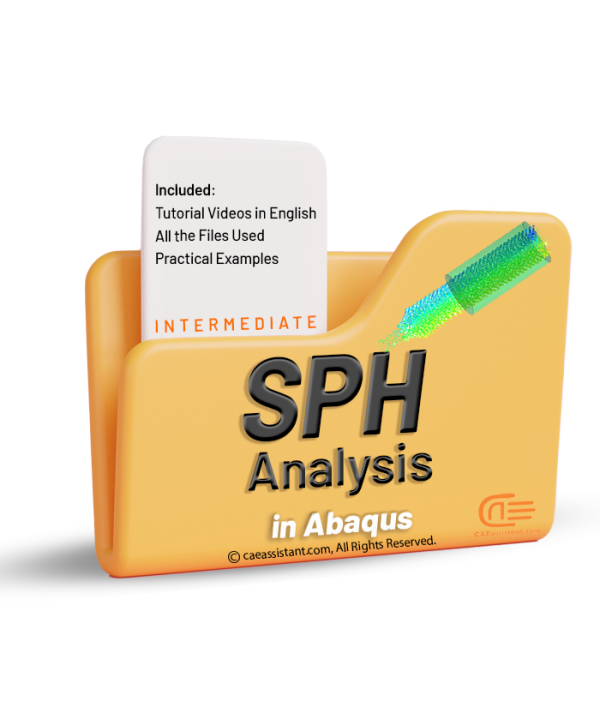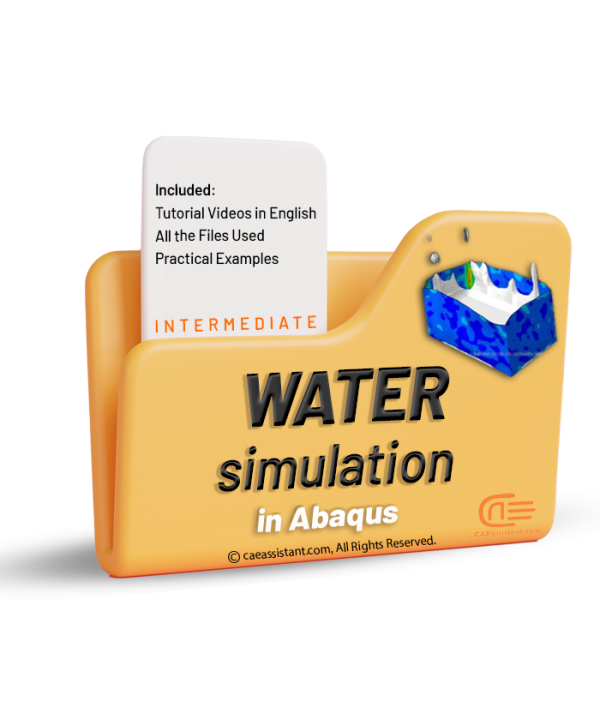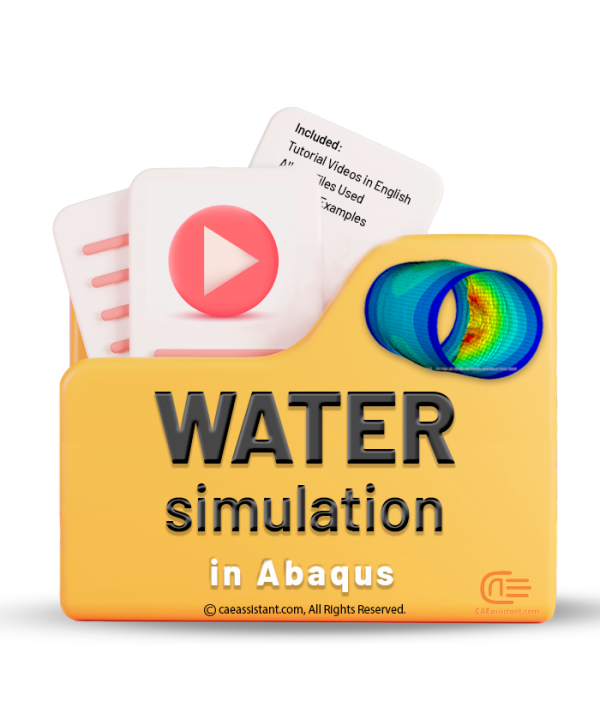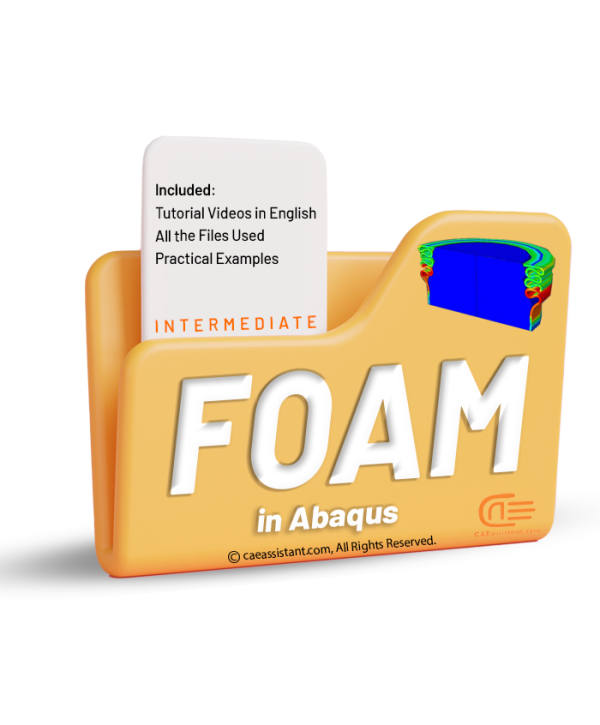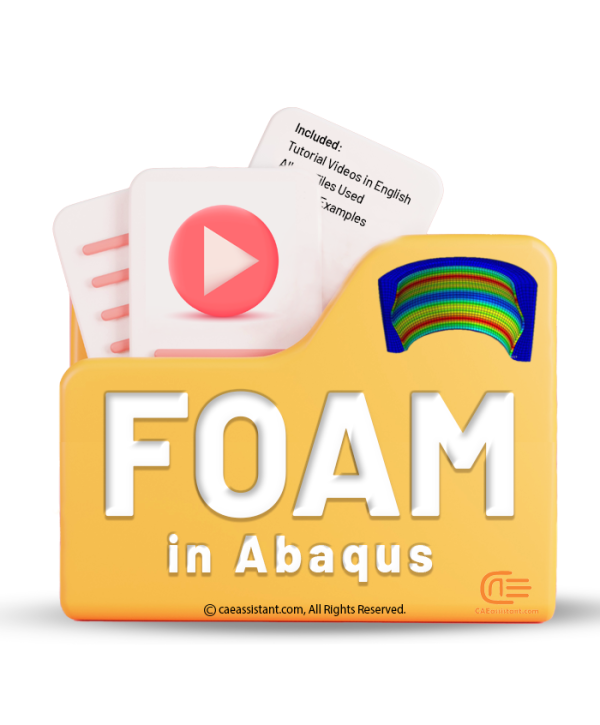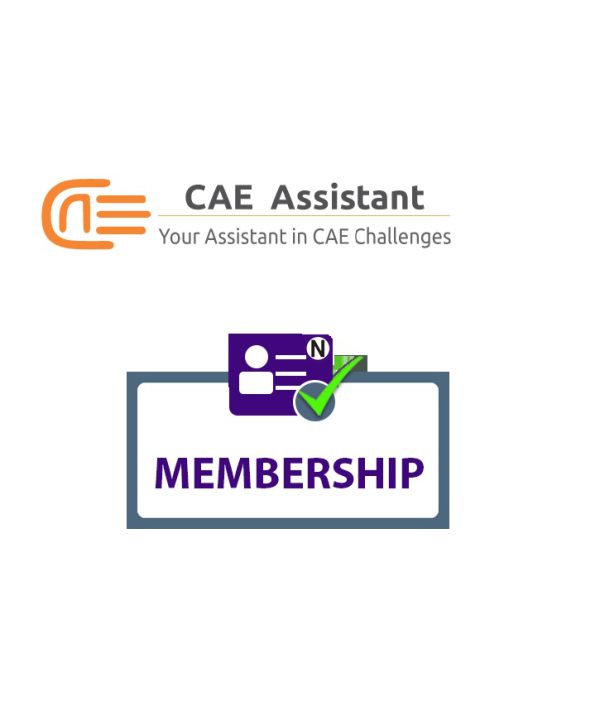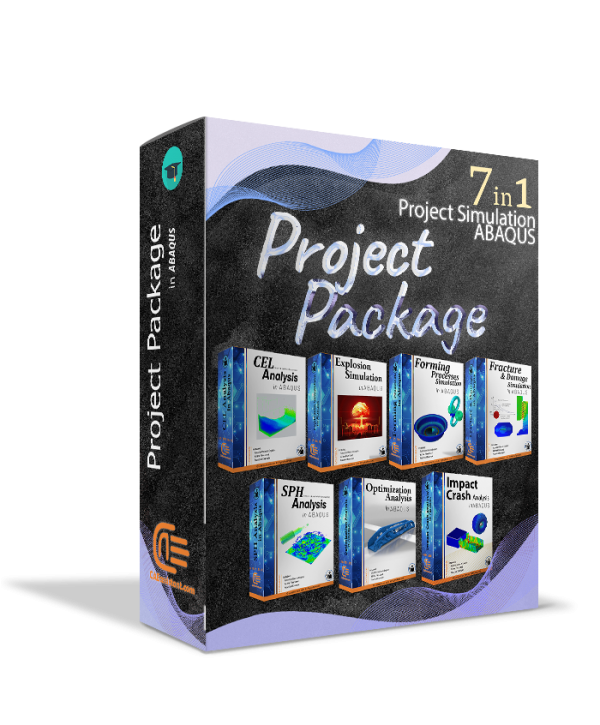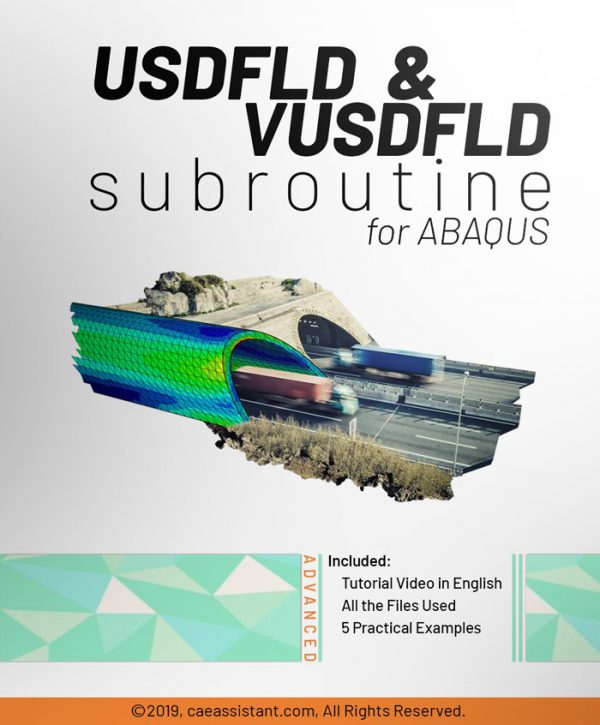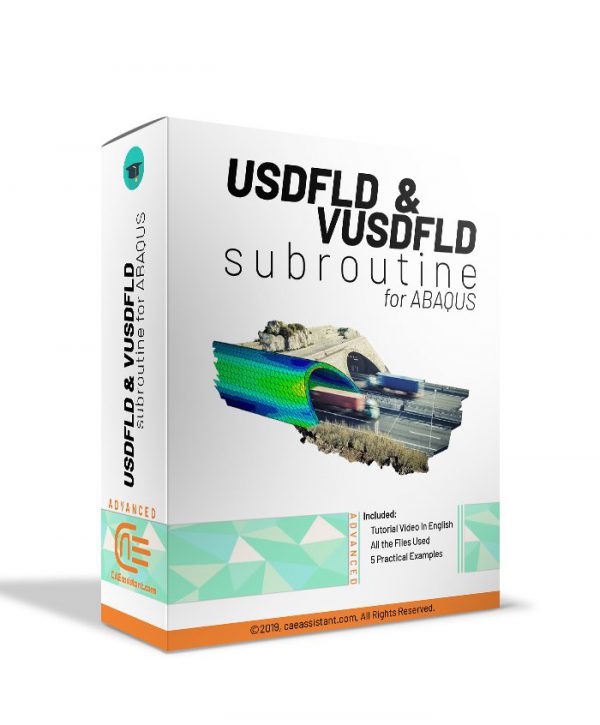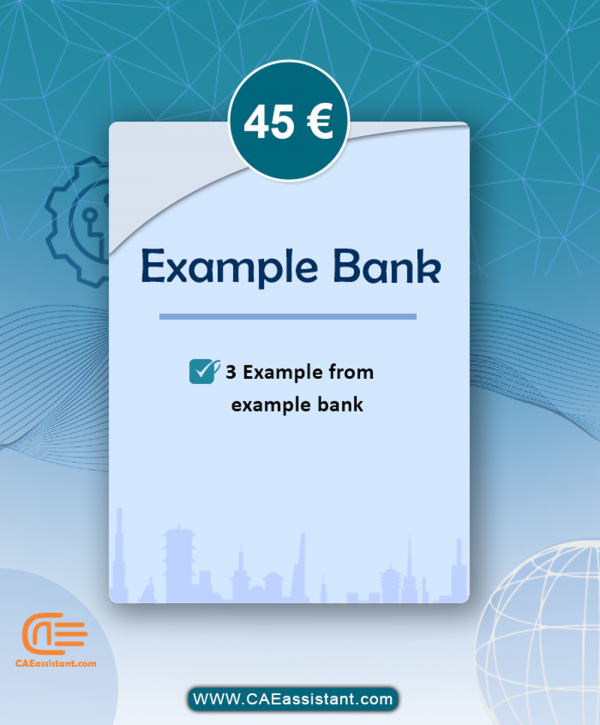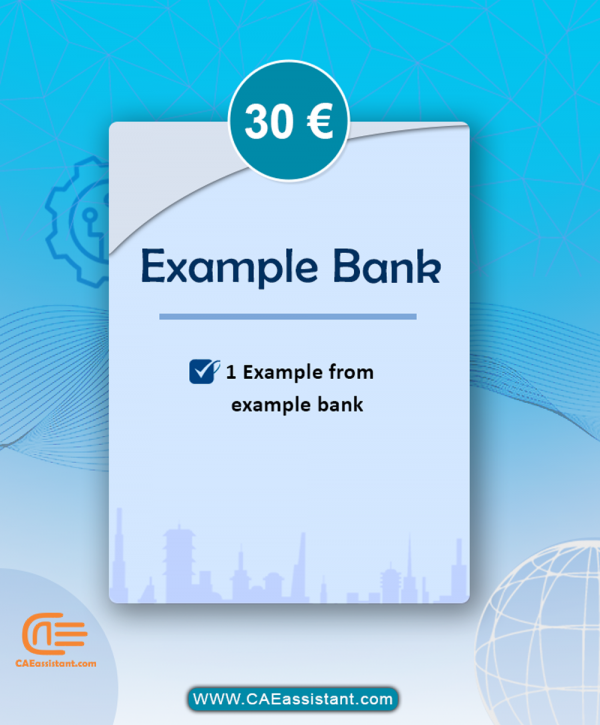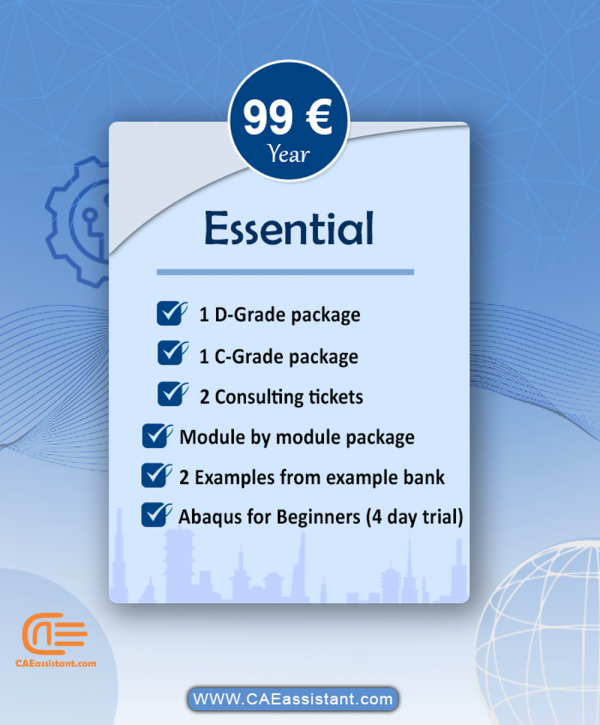Explosion
Johnson-Holmquist damage model in Abaqus
The Johnson-Holmquist damage model is used in solid mechanics to simulate the mechanical behavior of damaged brittle materials over a range of strain rates, including ceramics, rocks, and concrete. These materials typically exhibit gradual degradation under load due to the development of microfractures and typically have high compressive strength but low tensile strength. In this package, there are 13 practical examples to teach you how to use this damage model. The workshops are categorized into Ceramic materials, concrete, glass materials, and others.
Ultra-High-Performance Fiber Reinforced Concrete (UHPFRC) structures in Abaqus
UHPFRC (Ultra-High-Performance Fiber Reinforced Concrete) structures have emerged as a groundbreaking innovation in construction. These structures offer exceptional strength, durability, and performance, revolutionizing the industry. UHPFRC incorporates a precise combination of Portland cement, fine aggregates, admixtures, and steel or synthetic fibers, resulting in an extraordinarily dense and robust composite material. With compressive strengths exceeding 150 MPa, UHPFRC structures exhibit enhanced resistance to cracking, increased load-bearing capacity, and improved durability against environmental factors such as corrosion and freeze-thaw cycles. The superior mechanical properties of UHPFRC enable the design of slimmer and lighter elements, leading to reduced material consumption and more sustainable construction practices. UHPFRC structures find applications in various fields, including bridges, high-rise buildings, marine structures, and precast elements, offering long-term performance and contributing to the advancement of modern construction. In this package, you will learn how to simulate these structures with many practical examples.
Rock simulation is essential for evaluating the behaviour of rock masses under various loading conditions, such as earthquakes, landslides, and blasting. It enables engineers and geologists to assess the stability and integrity of rock structures, predicts potential failure modes, and develop effective mitigation strategies. Rock simulation is crucial in the design and planning of mining operations, tunnels, and underground constructions to ensure the safety and longevity of the structures. It also plays a vital role in assessing the seismic hazard of an area and evaluating the potential impact of earthquakes on the built environment. In this package, you will learn how to do an impact simulation on a granite stone using the JH-2 model; also an explosion simulation inside a rock for excavation purposes. You can learn more detail in the description of the workshops.
The aim of fire analysis is to evaluate the performance of structures in real fire scenarios and to develop strategies to improve their fire resistance and safety. Fire analysis is commonly used in the design and evaluation of buildings, bridges, and other structures. Fire analysis is the process of simulating the behavior of structures under fire conditions. Fire analysis typically involves two main steps: (i) heat transfer analysis to estimate the propagation of heat in the structure and (ii) structural analysis taking into account the effects of heat and mechanical loads. In this package, you will learn how to do a fire simulation on some structures and parts like concrete beams. You can find more details about how to do this simulation in the description of the workshops.
A tunnel is an underground or underwater passage for transportation, utility lines, or water pipelines. Tunnels are critical infrastructure, and their safety and reliability are essential for ensuring public safety and the smooth functioning of society. Tunnel simulation involves using computer models to predict the behaviour of tunnels under different types of loading conditions, such as earthquakes, floods, or explosions. These simulations can help engineers and policymakers assess the safety and reliability of tunnels, identify potential failure modes, and develop strategies to mitigate risks. By using advanced simulation techniques, engineers can better understand the complex behavior of tunnels and design more effective and durable structures. Tunnel simulation is an essential tool for ensuring the safety and resilience of tunnels and the infrastructure they support. Some workshops are presented in this package to teach you how to simulate and analyze tunnels in Abaqus; two of these workshops are Damage analysis of an underground box tunnel subjected to surface explosion and Tunnel dynamic analysis subjected to internal blast loading using CEL method.
Eulerian Modeling & CEL in Abaqus
The Eulerian method is a numerical technique used to analyze fluid mechanics problems. In this approach, the fluid is treated as a fixed grid, where the nodes remain stationary while the fluid flows through them. In Abaqus, the Eulerian method can be used to analyze fluid-structure interactions, such as fluid impact on structures or the behavior of fluids in containers. To use the Eulerian method in Abaqus, the desired geometry must first be meshed using Eulerian elements. The material behavior of the fluid is then defined using appropriate equations of state. Finally, the boundary conditions and loading are applied, and the system is solved using the appropriate numerical method, such as the finite element method. This package will teach you how to use this method and various practical examples.
A dam is a large concrete or earthen barrier built across a river or other waterway to create a reservoir for storing water. Dams are critical infrastructure for providing water for irrigation, drinking, and hydroelectric power generation. However, they are also susceptible to damage from natural disasters and human-made threats, such as earthquakes, landslides, and terrorist attacks. Abaqus can predict the behavior of dams under different loading conditions, including earthquakes, floods, and explosions. It also can model the interaction between the dam, water, and soil, making it a comprehensive and powerful tool for dam engineering. In this package, you will learn how to model dams in different conditions, such as dam simulation subjected to earthquakes in interaction with water and soil and dam simulation subjected to an underwater explosion.
An explosion is a rapid and violent release of energy, usually accompanied by a loud noise, heat, and pressure waves. Explosions can be caused by a variety of factors such as chemical reactions, combustion, nuclear reactions, or mechanical failure. Explosions can cause severe damage to buildings, infrastructure, and human life. To minimize the impact of such incidents, accurate and reliable simulation of explosions is crucial. Explosion simulation involves modeling the complex interactions of blast waves, shock waves, and debris with the surrounding environment. By simulating explosions, engineers and scientists can identify potential risks and develop effective safety measures. In this package, you will learn how to model explosions in different situations with practical examples, such as Air blast explosion simulation inside an RC room and Subsurface explosion simulation on buried steel pipelines.
9 Practical Workshops for SPH in Abaqus💡 | Abaqus SPH Tutorial
Smoothed Particle Hydrodynamics Tutorial: Abaqus SPH (Smoothed Particle Hydrodynamics) is a numerical method used in this software to model fluid-structure interaction problems. SPH in Abaqus is a meshless approach that uses a set of particles to discretize the fluid domain. The Abaqus SPH modeling tutorial is particularly useful for problems with large deformations, fragmentation, and free surface effects.
It can be used in combination with other Abaqus features, such as finite element analysis, to model coupled fluid-structure systems. This Abaqus SPH tutorial, created by CAE Assistant group, can help you understand and apply this method through practical examples, some of which include projectile impact simulation on a cementitious material, TNT explosion simulation inside a rock using the SPH method, bullet movement through a water pipe in Abaqus, and bird strike simulation in Abaqus.
Water is the primary component of the Earth's hydrosphere and the fluids of all known living things. Therefore, we build dams to store the water and transfer it through piping systems to use it for daily activities and produce energy. In industries, we use it as a cooler, solvent, hydroforming, cutting, etc. In this package, there are nine practical examples, such as the ones mentioned to teach you how to simulate water in Abaqus. These examples are explosions in the depth of the water, gravity dam simulation subjected to the underwater explosion, ball impact to the water, water jet cutting, etc.
Foam is a type of expanded plastic and rubber produced by forcing gas bubbles into a polymer material. It is a permeating, lightweight material. Along with corrugated packaging, foam fabric can protect goods during transportation. Foams, a novel family of ultra-light materials, have the capacity to undergo significant deformation at practically constant plateau stress, which allows them to absorb a significant amount of kinetic energy. In this tutorial package, you will learn how to analyze sandwich panels with an interior layer of foam, Foam-Filled Aluminum Tubes subjected to compressive loads, simulation of a reinforced foamed concrete beam, concrete-titanium foam panel explosion, etc. All of these cool practical examples with their complete tutorial videos are in this package which you can read their description below.
Academic or Business Membership
Payment Yearly
Why should you choose this Membership?
 This Abaqus course package contains more than 10000 minutes of video training files, including 150 packages, 500 workshops, and 300 videos,1000 simulation files, and 50 subroutines.
This Abaqus course package contains more than 10000 minutes of video training files, including 150 packages, 500 workshops, and 300 videos,1000 simulation files, and 50 subroutines.
 It will guide you going from the basics up to complex simulation techniques, and it is very fluid and comprehensive, and every single detail is explained.
It will guide you going from the basics up to complex simulation techniques, and it is very fluid and comprehensive, and every single detail is explained.
 Every lesson goes straight to the point, without any worthless piece of content. You will learn what you need at every stage, and you will be putting it into practice from the very first day.
Every lesson goes straight to the point, without any worthless piece of content. You will learn what you need at every stage, and you will be putting it into practice from the very first day.
If you need common industrial simulations in the fields of forming, fracture, explosion, impact, etc., this package can provide you with comprehensive training along with an instructional video file and software file. You can quickly meet your educational needs in learning the elementary and intermediate level of Abaqus software using this package.
Introduction to USDFLD and VUSDFLD Subroutine
In this usable tutorial, the material properties can change to an arbitrary dependent variable. One of the most important advantages of this subroutine is simplicity and applicability. Various and high usage examples are unique characteristics of the training package.
This training package includes 5 workshops that help you to fully learn how to use USDFLD and VUSDFLD subroutines in Abaqus software. By means of these subroutines, you will have expertise redefine field variables at a material point by the solution dependence of standard and explicit, respectively.Three Examples from Example Bank
In the Example Bank, there are hundreds of ready-made modeling examples that can help you in the simulations related to your project. By seeing similar examples, you can get an idea of how to prepare your model in Abaqus.
You can order three examples for 45 Euros and start modeling your project and if you had more questions and ambiguities order training packages and other products.
In the Example Bank, there are hundreds of ready-made modeling examples that can help you in the simulations related to your project. By seeing similar examples, you can get an idea of how to prepare your model in Abaqus.
You can order one example for 25Euros and start modeling your project and if you had more questions and ambiguities order training packages and other products.
By getting this account, you can get one of the D-grade packages of your choice. You can also download one of the C-grade packages of your choice. Get advice from our experts about your project and ask questions by sending two tickets.
Also, if you are a new Abaqus user and need basic training, you can download the Abaqus module-by-module training package, and you will also have access to the comprehensive "Abaqus for beginners" training package.
Here is a description for the membership to access ABAQUS packages based on the provided details:
ABAQUS Packages Membership
- Duration: 12 months
- Cost: €2,489 per 12 months
- Packages Included: 20 packages
- Packages Paid For: 13 packages
- Discount: More than 65%
- Access to 20 ABAQUS software packages
- Pay for only 13 packages, but receive 20 packages
- Significant discount of more than 65% off the regular package pricing

